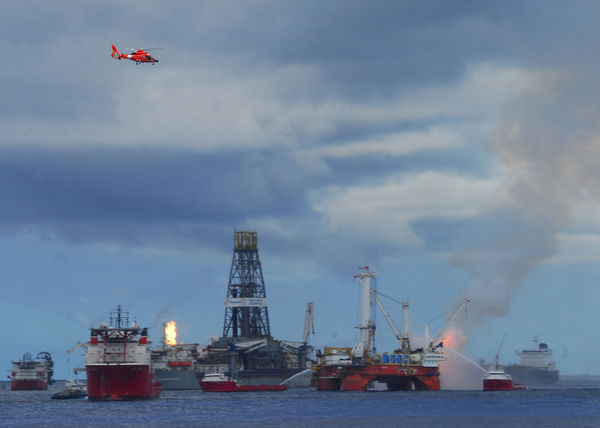NOAA’s role in oil spill response: damage assessment, remediation, and restoration
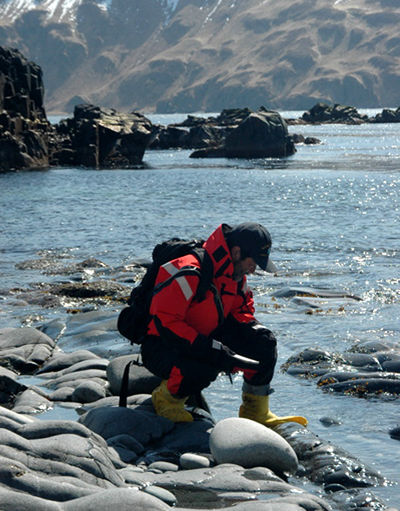 A NOAA scientist checks an Alaskan shoreline for oil beached after a 2004 oil spill. Credit: NOAA A NOAA scientist checks an Alaskan shoreline for oil beached after a 2004 oil spill. Credit: NOAA
|
Under the Oil Pollution Act of 1990, a Natural Resource Damage Assessment is the legal process to determine the type and amount of restoration needed to compensate the public for harm to natural resources as a result of an oil spill.
NOAA (National Oceanic and Atmospheric Administration (NOAA), United States) is a lead federal trustee for protection and restoration of coastal and marine natural resources, including marine and migratory fish, endangered species, marine mammals and their habitats. NOAA responds to as many as 150 oil spills every year. In response to oil spills, NOAA has restored thousands of acres of coastal habitat in the past 18 years. These restoration efforts, often focused on wetlands, coral and shellfish reefs, beaches and rivers benefit coastal communities that rely on vibrant fisheries and thriving wildlife for recreation, tourism, and food.
NOAA (National Oceanic and Atmospheric Administration (NOAA), United States) works cooperatively with other natural resource trustees and, when possible, the parties responsible for the pollution. The Damage Assessment process promotes cost-effective assessment and restoration — benefiting the public, the responsible parties, and the environment.
During and after an oil spill, there are three main steps to restore impacted areas:
- Preassessment: Determine whether injury to natural resources has occurred. Work includes collecting time-sensitive data, reviewing scientific literature about the oil and its impact on coastal resources, and determining the extent and severity of injury.
- Injury Assessment and Planning: Scientific and economic studies assess and quantify the injuries and the loss of services. A restoration plan is developed to identify restoration projects.
- Restoration: Work with the public and responsible party to select, implement, and monitor restoration projects. The responsible parties pay for assessment and restoration costs.
Five Notable Oil Spills of Recent Years
- British Petroleum Deepwater Horizon MC252 Rig, Louisiana: On Earth Day, April 22, 2010, an oil rig in the Gulf of Mexico sank after suffering damages from an explosion and fire two days prior. Millions of gallons of oil have leaked from the well about a mile below the surface of the ocean. Preliminary assessments have begun, but response is still underway. It could be months or years before the full extent of the injuries are known. However, some restoration actions will likely occur in the short-term, to speed known resource injuries toward recovery, while other restoration activities can only be implemented once the full suite of natural resource losses are considered and appropriate restoration options are selected.
NOAA is concerned about ongoing and long-term impacts to fish, shellfish, marine mammals, turtles, birds, and other sensitive resources as well as their habitats, including wetlands, beaches, mudflats, bottom sediments, corals, and the water column.
- Barge DM932 and Tintomara, Louisiana: In July 2008, the chemical tank ship Tintomara collided with the American Commercial Lines barge DM932 near downtown New Orleans, resulting in a spill of 270,000 gallons of oil. Cleanup of the incident took several months. Injuries are being assessed.{| width="200" border="1" cellspacing="1" cellpadding="1" align="center"
| 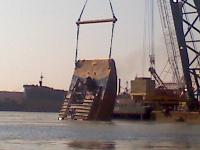 Barge DM932 Bow Section Removal. Credit: IncidentNews.gov
|}
Barge DM932 Bow Section Removal. Credit: IncidentNews.gov
|}
- Cosco Busan, California: In November 2007, the container ship M/V Cosco Busan struck the San Francisco-Oakland Bay Bridge in San Francisco Bay and tore a large gash in the hull of the vessel, and 53,000 gallons of fuel oil were released into the water. The oil spread along many miles of sensitive coastline, including beaches, rocky intertidal habitats, coastal lagoons, and wetlands.{| width="200" border="1" cellspacing="1" cellpadding="1" align="center"
|  Container ship M/V Cosco Busan with a gash on its side after colliding with the San Francisco Bay Bridge. Credit: US Coast Guard
|}
Container ship M/V Cosco Busan with a gash on its side after colliding with the San Francisco Bay Bridge. Credit: US Coast Guard
|}
- Chalk Point, Maryland: On April 7, 2000, a leak was detected in an underground pipeline that supplies oil to the Potomac Electric Power Company Chalk Point generating station in Aquasco, Md. Approximately 140,000 gallons of fuel oil spilled into Swanson Creek, and about 40 miles of environmentally-sensitive downstream creeks and shorelines were oiled as a result. This case was settled in 2002, and the trustees have undertaken a series of restoration projects to address natural resource and lost use injuries associated with the fuel pipeline leak.{| width="200" border="1" cellspacing="1" cellpadding="1" align="center"
| 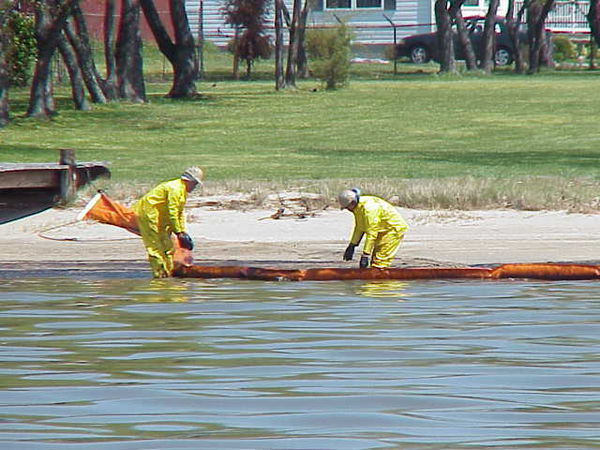 Placing of containment boom along the eastern shore of Patuxent River following the Chalk Point incident. Credit: Maryland Department of the Environment
|}
Placing of containment boom along the eastern shore of Patuxent River following the Chalk Point incident. Credit: Maryland Department of the Environment
|}
- Athos Spill, Delaware, New Jersey and Pennsylvania: In November 2004, the M/T Athos I struck a large, submerged anchor while preparing to dock at a refinery in Paulsboro, New Jersey. The anchor punctured the vessel’s bottom, resulting in the discharge of nearly 265,000 gallons of crude oil into the Delaware River and nearby tributaries. Injuries are being assessed. The claim has been submitted to the National Pollution Fund Center for adjudication.{| width="200" border="1" cellspacing="1" cellpadding="1" align="center"
| 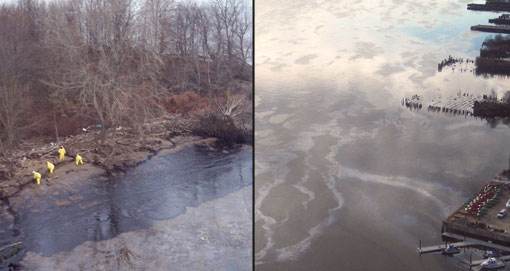 Workers clean up spilled oil along the Tinicum Island shoreline in Pennsylvania (left). Three days after the initial accident, oil sheen can still be seen in the Delaware River (right). Credit: NOAA
|}
Workers clean up spilled oil along the Tinicum Island shoreline in Pennsylvania (left). Three days after the initial accident, oil sheen can still be seen in the Delaware River (right). Credit: NOAA
|}

